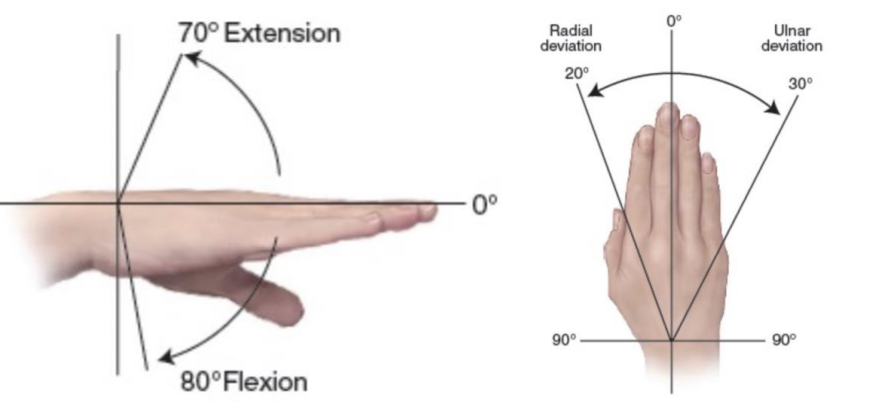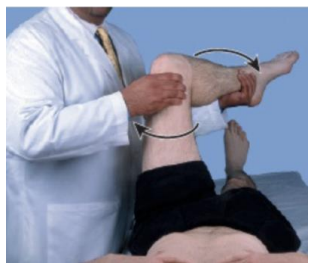Musculoskeletal Exam
For nomenclature regarding direction of movement, see here: Anatomy Nomenclature > Movement
Jaw (temporomandibular joint)
- Inspect
- Palpate along TMJ
- Place fingers on tragus (ridge) in front of each ear and ask patient to open their mouth. Feel for swelling or tenderness

Neck (cervical spine)
- Inspect
- Palpate along spine and paravertebral muscles
- Assess range of motion
- Ask patient to bend their neck to look at the floor and up to the ceiling
- Ask patient rotate head
- Ask patient to touch ears to each shoulder
Back (thoracic and lumbar spine)
- Inspect
- Palpate along spine
- Palpate paravertebral muscles (along spine)
- Assess range of motion
- Flexion: Ask patient to touch toes
- Extension: Ask patient to bend backwards
- Lateral bending: Ask patient to lean left and right
- Rotation: Ask patient to turn body to both sides
Shoulders
- Inspect
- Palpate shoulders
- Assess range of motion
- Flexion: Ask patient to raise arms above head
- Extension: Ask patient to bring arms back as far as comfortable
- Abduction: Ask patient to raise their arms laterally
- External rotation: Ask patient to place hands behind their neck
- Internal rotation: Ask patient to place their hands behind their back and raise them as far as comfortable
Elbows
- Inspect
- Support the patients forearm and palpate
- Assess range of motion
- Flexion: Ask patient to bend elbow
- Extension: Ask patient to straighten arms
- Protonation/supination: Ask patient to flip their palms facing up and then down
Wrists & Hands
- Inspect
- Palpate distal radius/ulna, wrist, down fingers
- Assess wrist range of motion
- Flexion: Ask patient to bend wrists up and down
- Adduction/abduction: Ask patient to move wrists horizontally left and right

- Assess fingers range of motion
- Flexion: Ask patient to close and open their hands
- Adduction/abduction: Ask patient to splay out fingers
- Ask patient to bring their thumb to their pinky
Hips
- Have patient lay back
- Inspect
- Palpate iliac crest, along hip, and inguinal ligament
- Assess range of motion
- Flexion: Bring knee to chest
- Internal/external rotation: Position knee at 90deg and rotate hip towards midline and then away from midline

- Adduction/abduction: Stabilize at superior hip and pull leg inward and outward

Knees
- Inspect
- Palpate knee
- Assess range of motion
- Flexion: Ask patient to flex at knee
- Extension: Ask patient to extend at knee
Ankles & feet
- Inspect
- Palpate anterior ankle, Achilles tendon, heel, tarsals
- Assess range of motion
- Dorsiflexion: Stabilize at ankle and ask patient to point foot towards ceiling
- Plantarflexion: Stabilize at ankle and ask patient to point towards floor
- Eversion/inversion: Stabilize at ankle and turn foot laterally and medially
Hips (standing)
Assess flexion/extension by asking patient to bring each leg forward and backwards